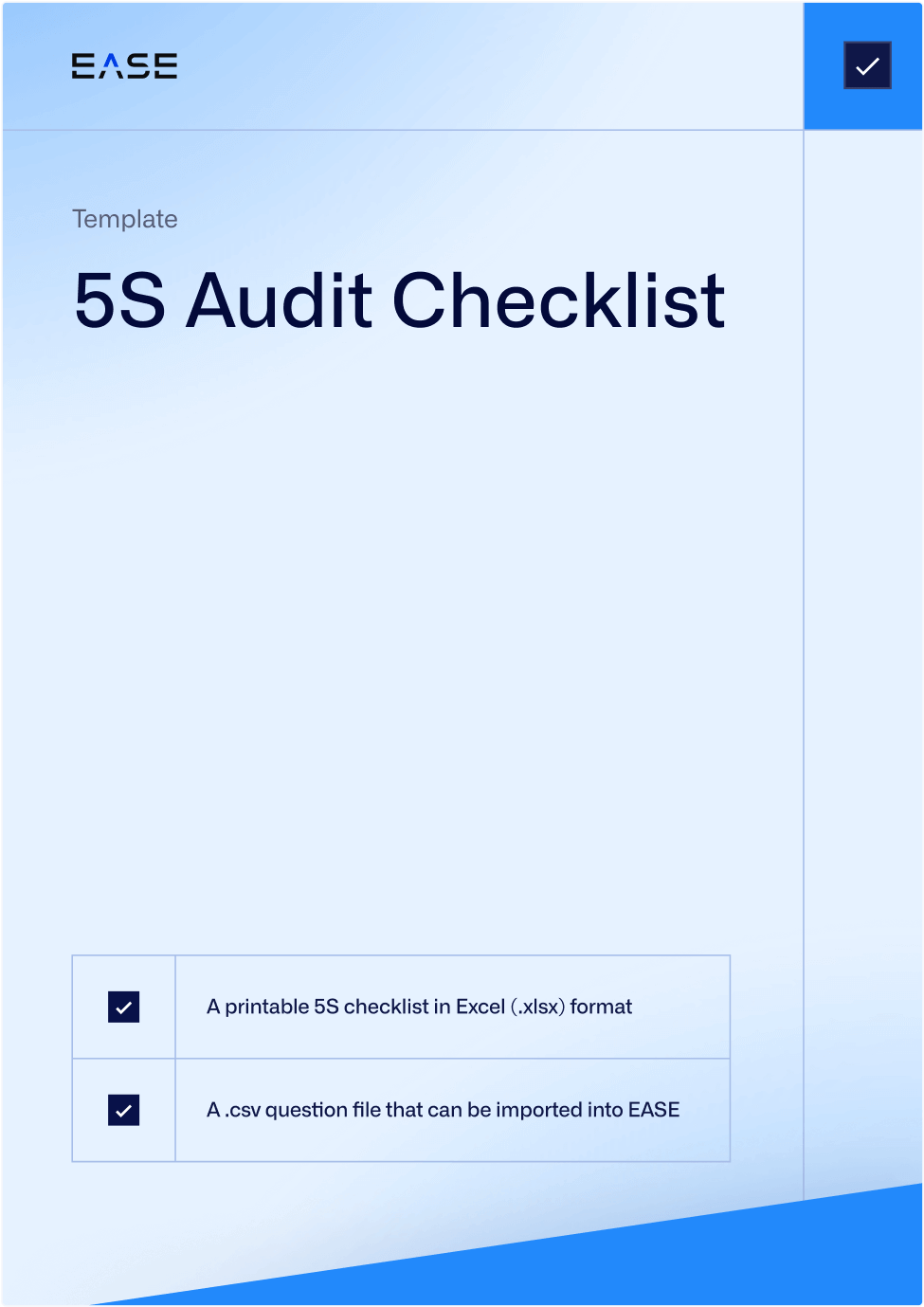5 Ways to Use Mobile Audit Software in Your Plant


Making layered process audits (LPAs) more efficient and effective is a top goal for many customers that implement EASE mobile audit software. It’s especially true for automotive and aerospace suppliers, with several original equipment manufacturers (OEMs) requiring these quick daily audits to minimize process errors and production defects.
But the truth is, the use of EASE doesn’t begin and end with LPAs. In fact, it can be used for multiple audit types.
To demonstrate how, we spoke with Quality Systems Manager John Rose of Jacobs Vehicle Systems (JVS) about how his team uses mobile audit software, including for LPAs, 5S audits and more.
Download our free Ultimate Guide to Layered Process Audits for best practices, tips and strategies for getting better results from LPAs
1. Layered Process Audits
LPAs are the classic use case for EASE, which was designed specifically for these high-frequency audits. Automation helps plants improve results with LPAs by:
- Increasing audit compliance through automated scheduling and email reminders
- Improving visibility of findings and follow-up through reporting
- Making audits simpler through an intuitive app used on mobile devices
Switching to software-based LPAs has helped JVS increase audit completion rates by more than 40%, while also helping close the loop on audit findings and minimize gaps in audit coverage.
2. Safety Audits
Within two months of seeing better results with LPAs using EASE, JVS decided to expand their use of the software into safety audits. This was relatively simple given that they already had a pool of auditors set up who were comfortable using the mobile app.
“We use EASE for safety audits almost like we do LPAs,” says Rose. “Some people do a safety audit once a week or once a month, while production supervisors do a daily inspection.”
Some safety inspections are only two questions long, but the fact that they are done every day helps identify hidden risks and prevent safety incidents.
Rose says when the pandemic hit, his team was able to quickly add questions in areas such as proper mask usage and social distancing. Changes in work layouts to accommodate the new restrictions also made it important to have extra eyes on processes.
3. 5S Audits
Mobile audit software is also well-suited to 5S audits, a Lean approach focused on creating a clean, safe and organized workplace. To conduct these audits, JVS uses a strategy similar to LPAs, with just three to four short questions per audit.
Using EASE to conduct 5S audits meant creating additional locations for non-manufacturing areas, for example, team cubicle or material rack areas. Examples of checklist questions include:
- Are there any unnecessary tools in the cubicle?
- Are there files or paperwork everywhere?
- Are there any stray parts not identified?
4. Standard Work Audits
Standard work audits are similar to LPAs but focus specifically on whether operators are following work standards. Auditors watch the operator and make sure they follow the process in the right order based on what’s posted, helping identify deviations that can lead to problems such as cycle time or throughput issues.
What makes standard work audits different from LPAs is that they may involve watching a process for several minutes over the course of a few cycles. They also include details on what to look for and are more specific than, “Is the operator following work standards?”
These audits may take place less frequently, looking at up to three questions on one-third of lines once per quarter. Auditors ask the same questions every time, examining items such as whether the standard work playbook is visible or whether a bottleneck can be identified.
“Standard work audits make sure things are done the way they’re supposed to,” says Rose, adding that sometimes operators deviate from procedures in an effort to help. “We’re able to track results and mitigations and look at that data over time to make sure everything is going the way it should.”
5. Product Audits
Using mobile audit software to look at the final product helps avoid customer complaints and contain issues before they affect the customer.
“There’s some overlap between LPAs and product audits in terms of using the same pool of auditors and locations,” Rose says. “When there’s a finding, we’re able to get it sorted here rather than finding out after we ship a thousand pieces to the customer.”
Whereas LPAs focus on process inputs, product audits might include questions such as:
- Are there enough parts in each tote?
- Are all the widgets on each part?
- Are all parts labeled?
Most manufacturers who work with EASE do so because the platform is uniquely suited to LPAs. However, once you’re familiar with the software, it’s easy to expand into multiple audit types by simply creating new tags or categories for questions in the question library. In many cases, you can even use the same locations and auditors you’ve already set up. And best of all, EASE enables you to create custom reporting dashboards to measure the performance of all of your different audit programs.
Ultimately, a little extra effort can help you get much more from your investment and promote continuous improvement across the plant.
Download a free 5S checklist template to get started quickly with 5S audits
Contact support@ease.io if you’re already an EASE customer and want to use the platform for 5S or other audits.
